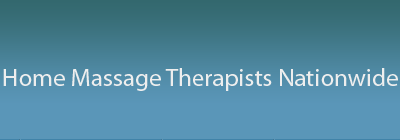Swedish Home Massage
Why choose Swedish? There are over 80 massage techniques you can consider, but undoubtedly the most common is the Swedish. The technique was developed combining some eastern and western methods, and uses a kneading motion, long soft strokes and light tapping. The masseuse will be working on the topmost layer of your muscles. Gentle flexing of the joints may be employed, in combination with the muscle manipulation. Considered by most to be very relaxing and energizing, it can also be helpful to healing after an injury.
In one clinical trial, conducted in 2007, there was marked improvement of function in test subjects with osteoporosis of the knee after an 8 week course of treatment with Swedish massage.*
There are 4 basic types of manipulative motions the masseuse will be using,
- Effleurage – a smooth, gliding stroke used to relax soft tissue;
- Petrissage – the squeezing, rolling, or kneading that follows effleurage;
- Friction – deep, circular movements that cause layers of tissue to rub against each other, helping to increase blood flow and break down scar tissue;
- Tapotement – a short, alternating tap done with cupped hands, fingers, or the edge of the hand.
Some of the symptoms that Swedish massage can help with are:
- Stress relief
- Increased circulation, which directs more oxygen to every organ in your body
- alleviate pain
- improve muscle tone
- rejuvenate skin tone
- boost energy
- improve sleep
FAQ’s
Why is it called “Swedish”?
Development of the method was at one time inaccurately credited to a Swede, Per Henrik Ling. The term is only recognized English, Québécois or Dutch speaking countries. Elsewhere the style is referred to as “classic massage”.
Do I need to be naked?
Most masseuses’ will ask you to undress, and drape your body with a cloth, both for modesty and to help prevent muscular chilling. Also, you can expect them to use an oil, to reduce friction between your body and their hands.
Homemassage.com is the definitive source for information on the many methods of massage out there. Additionally, using their expert advice, pinpointing the absolute BEST method from among the 80 available makes the entire experience so much more rewarding!
* Robert Shawe P. (June 2007). “Massage for Osteoarthritis of the Knee”. Journal of the Australian Traditional-Medicine Society 13 (2): 87.


